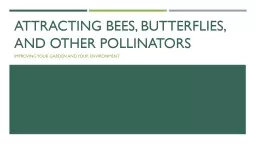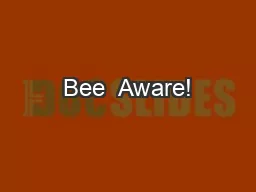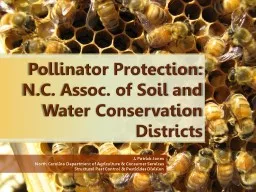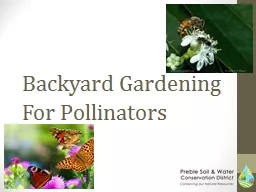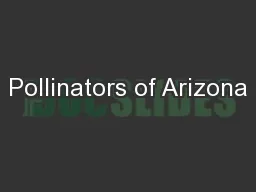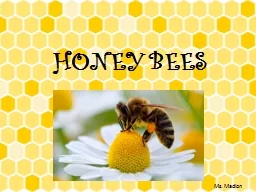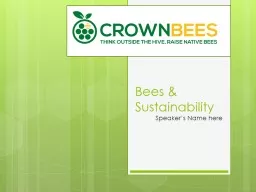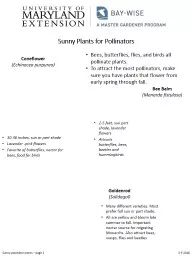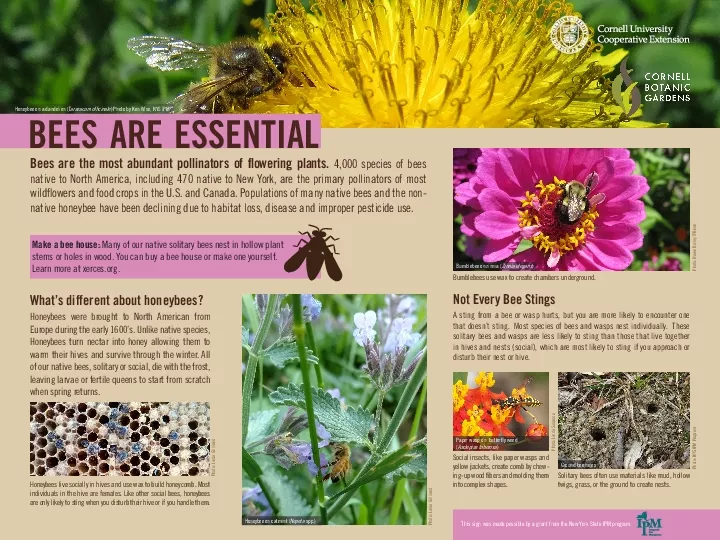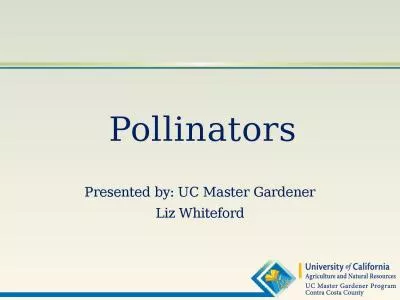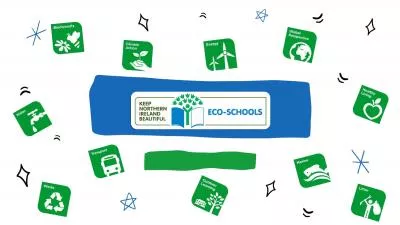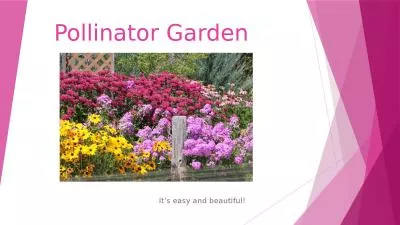PPT-Attracting Bees, Butterflies, and Other Pollinators
Author : liane-varnes | Published Date : 2017-05-02
Improving Your Garden and Outdoor Environment Plant flowers rich in pollen amp nectar Pollinators love plants like lavender aster goldenrod and sage Avoid using
Presentation Embed Code
Download Presentation
Download Presentation The PPT/PDF document "Attracting Bees, Butterflies, and Other ..." is the property of its rightful owner. Permission is granted to download and print the materials on this website for personal, non-commercial use only, and to display it on your personal computer provided you do not modify the materials and that you retain all copyright notices contained in the materials. By downloading content from our website, you accept the terms of this agreement.
Attracting Bees, Butterflies, and Other Pollinators: Transcript
Download Rules Of Document
"Attracting Bees, Butterflies, and Other Pollinators"The content belongs to its owner. You may download and print it for personal use, without modification, and keep all copyright notices. By downloading, you agree to these terms.
Related Documents

